#MapMaking
Explore tagged Tumblr posts
Text
Sea creatures

Various medieval sea monsters that I draw on my fantasy maps
527 notes
·
View notes
Text
youtube
This video showcases my Blender model of the planet that the Scud aliens call home, the fourth and final world I've mapped out for @jayrockin's "Runaway to the Stars" project. A *lot* of maps were created in service of this final render, and also in service of presenting the special qualities of this planet. I intend to show you as many of these as I can under the cut, and also in subsequent posts focusing on some of the more interstitial, ancillary maps and figures that played a part in producing the primary maps you'll see in this main post.
Before I show the first maps I made for this project, what you see below are the satellite-style maps for the Equinoxes and Solstices, in order of (Northern) Spring, Summer, Fall, and Winter, the latter serving as the texture for the Blender object you saw in the video.




__________
With that matter covered, our next focus is this project's foundation: Geology. While I didn't spin as elaborate a tectonic history for this planet as I did for the Ayrum commission, I did work out as much detail as I could for the more recent geological activity, to set the stage for the elevation data - including a narrower focus on the coastal shallows that host the Scud populations.




__________
Once I could move on to climate, my first step was finding this planet's relative Insolation, which I managed thanks to @reversedumbrella's code and coaching. With an obliquity of only 16 degrees, this planet's yearly maximum Insolation levels stick close to the equator, compared to pole-to-pole oscillation we see on Earth

__________
Having a rough sense of where heat would concentrate seasonally and how the landmasses would deflect water in light of the planet's retrograde spin, I was able to set down the bi-annual ocean currents (Northern Summer above and Northern Winter below), then the monthly water temperatures pushed around by said currents, and finally -after factoring in many other considerations- the monthly land temperatures as well (combined in the second gif)


__________
Next came the seasonal air pressure maps and subsequent wind patterns (my first time creating those from scratch), which later factored into the precipitation maps. The incredible temperatures at the largest continent's interior make a desert of most of it, and the other interiors are fairly dry too, but all that heat on the equatorial ocean generates a *lot* of evaporation which ends up coming down elsewhere.




__________
With temperatures and precipitation mapped out for each month, I was able to find how the accumulation and melt of ice and snow played out, too. Given such a hot equator it's surprising to see freezing temperatures hold out in some places, but low obliquity and high elevation shield what areas they can, it seems.


__________
All this monthly data was then painstakingly combined and compared and plugged into equations to produce maps of discrete climate zones, using both the Köppen (left) and Trewartha (right) classification systems. The higher latitudes see some overlap with Earth's conditions, but the Tropics...


__________
I never really finished the map I wanted to make with my own loosely customized classification system, but I *did* get as far as this breakdown of the areas that sometimes surpass 56.7 degrees Celsius, Earth's record for highest surface temperature ever directly measured. And as you can see, that earthly record is broken by a *significant* fraction of this planet's surface, and far exceeded by the equatorial continent's deep interior

__________
The final phase of this project dealt with creating satellite maps of this planet's surface (which you saw at the top of this post), which started with a map of dry and submerged substrate, then a density map of the vegetation that sits atop it, then the colors of that vegetation under annual average conditions (demonstrating how they would appear in-person, rather than the area's appearance from orbit), and finally plant colors under seasonal conditions (same conceit as previous). In concert with the seasonal ice and snow maps, it was the four maps in the last sequence which were overlaid on the Substrate map, using the plant density map as raster masks, to produce the final Satellite-Style maps.
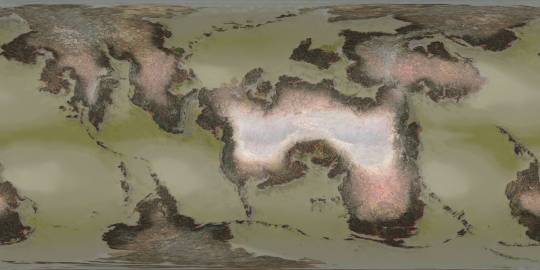



__________
This planet's sophonts being a marine species, it was then worth focusing on the conditions underwater, which included monthly seafloor temperatures (first gif), annual discharge of sediment from rivers (magenta in the 2nd gif), and seasonal upwelling of nutrients from deeper water (blue in the 2nd gif).


The creation of all my maps seen in this post was possible thanks to Photopea, which has been my go-to for several years now. The resolution kinda got crunched when I uploaded these here, so when I share them on Reddit later I'll add those links under this. These have also already been posted on Twitter, which you can see here if you like. Thanks for scrolling all the way down here!
#digital painting#Photopea#digital 3d#Blender#mapmaking#imaginary maps#Runaway to the Stars#Rtts Scuds#speculative planetology#speculative geology#speculative climatology#alien planet#major post#commission#christopher maida artwork#Youtube
765 notes
·
View notes
Text
Map of the Solar System from Signalis

#signalis#maps#cartography#imaginary maps#mapmaking#worldbuilding#fallout#science fiction#scifi#scifiart#outer space#solar system#space
658 notes
·
View notes
Text
"Up is Out" is now in drivethrurpg !!
Up is Out is a co-op solo role playing game of exploration, resource management, map making, journaling, asymmetrical roles, and lore creation, that uses books you already own as sources to spark your imagination.
If anyone plays it, I'd love to hear your thoughts and know if you had fun with it :)
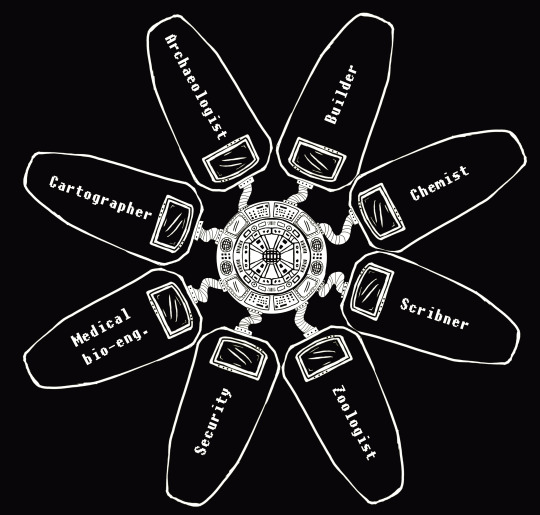
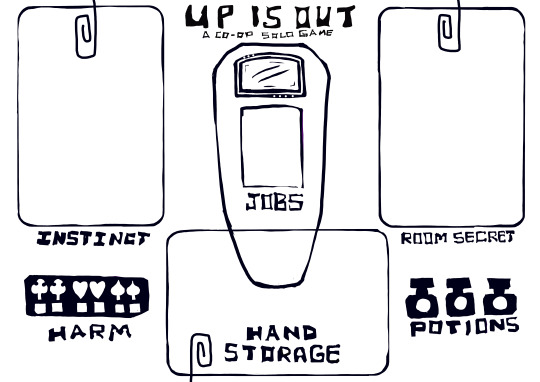
#ttrpg#roleplaying game#tabletop role playing game#indie ttrpg#solo ttrpg#co op games#worldbuilding#world building#used books#bibliophile#cards#card games#map making#mapmaking#exploración#ttrpg community#resource management#indie games#scifi#sci fi and fantasy#scifi ttrpg#original art
73 notes
·
View notes
Text
I’m currently cooped up and I have the weirdest request crossing my mind:
Cartography tumblr, I want to know about the most dogshit maps we have. These can be modern maps, or historical maps that would have been considered Bad by their contemporaries’ standards.
Barring that, I’m all for some weird map facts.
Help a guy out?
79 notes
·
View notes
Text

shalhavar height map (WIP)
hello i never update this blog heehoo, here's a thing i've been working on for a big long while, i'm a big geography fan and this is just one of my many obsessive mapping endeavors
so as you can tell, this is still a WIP, but i'm very pleased with how it is looking so far, this map depicts the topography of Shalhavar, the country where most of my character cast (and lore) is based in
65 notes
·
View notes
Text

Backrooms Found Footage #3 Full Map (Kane Pixels Backrooms) Spent about 9 hours yesterday scouring the new found footage video by Kane Pixels to construct this full map just from the footage and by making best-guess inferences.
Some areas are easy-to-follow, while other areas are extremely difficult (usually due to the cutting of the camera and appearing somewhere completely different). But by using subtle inferences (such as the garage door areas, the elevator, etc), and backtracking several areas, an almost full drawn map can be made.
You can track the progress of our protagonist by following the black line at the beginning through his entire journey.
(AND of course if you haven't watched Mr. Kane Pixel's Backrooms video yet silly, I suggest you watch it!!! You can follow along the protagonists journey during the video if you like)
#art#artists on tumblr#digital art#mapmaking#the backrooms#liminal spaces#kane pixels#backrooms fanart#found footage#my art#liminal#back rooms#kanepixels
122 notes
·
View notes
Text

Galdur's Bate Red.
#dnd#d&d#dungeonsanddragons#ttrpg#rpg#mapmaking#drawing#tabletop#battlemap#worldbuilding#cartography#fantasymap#indiegame#gamedev#gaming
67 notes
·
View notes
Text

Dragon Graveyard [25x37]
Somewhere high, near the mountain peak, a dragon collapsed mid-flight and fell to the ground. What happened to the mightiest creature of your setting? Dragons don't die of old age, especially mid-flight... There may be a party of adventurers looking for a quest!
Patreon- for just 5$ get 1000+ battlemaps!
Roll20
#maps#map#battlemaps#mapmaking#vtt#rpgmap#dnd#battlemap#dndmap#ttrpg#vttmap#roll20#vtttmaps#dungeonsanddragons
65 notes
·
View notes
Text

Map of the continent of Roshar from the Stormlight Archive
Made this back in early 2023... and didn't notice the two (?) missing nations or the slight mistake of the veracity of the altitude of a certain place.
https://inkarnate.com/p/PMv1gN/maps/A1LKVd
It's freely editable here if you have an Inkarnate subscription.
#fantasy#cosmere#stormlight archive#no spoilers#brandon sanderson#map#mapmaking#dnd maps#fantasy map
45 notes
·
View notes
Text
Dead God

Where do gods go when they die? A complex question with deep philosophical and theological implications, but in your setting of choice, perhaps one with a very simple answer. It could be a place, out of time and space, where decaying deific forms wither and rot, forgotten by all and no longer sustained by the power of belief. What manner of treasure, knowledge, or power might be found within such a long dead husk, and what bizarre and alien creatures might make their lair within one? That’s for you to decide, as you dazzle your players with these three maps, all animated, featuring an external and internal view of a massive humanoid carcass floating in a sea of stars. A giant, a god, or maybe just a regular-sized corpse visited by really tiny PCs?! A Fantastic Voyage into Innerspace awaits.
#dnd#battlemap#dungeonsanddragons#rpg#ttrpg#dungeonmaster#fantasymap#tabletoprpg#dndmaps#roll20#worldbuilding#pathfinder#cartography#fantasymaps#fantasy#rpgmap#tabletop#mapmaking#dndart#map#battlemaps#tabletopgames#inkarnate#dungeonsanddragonsart#dndmap#fantasyrpg#rpgmaps#foundryvtt#angelamaps
61 notes
·
View notes
Note
Any games with a lot of collaborative world building?
THEME: Collaborative Worldbuilding
Hello friend! I have so many games for you. At the end of this recommendation post is a list of other posts I've made that are directly related to this theme!

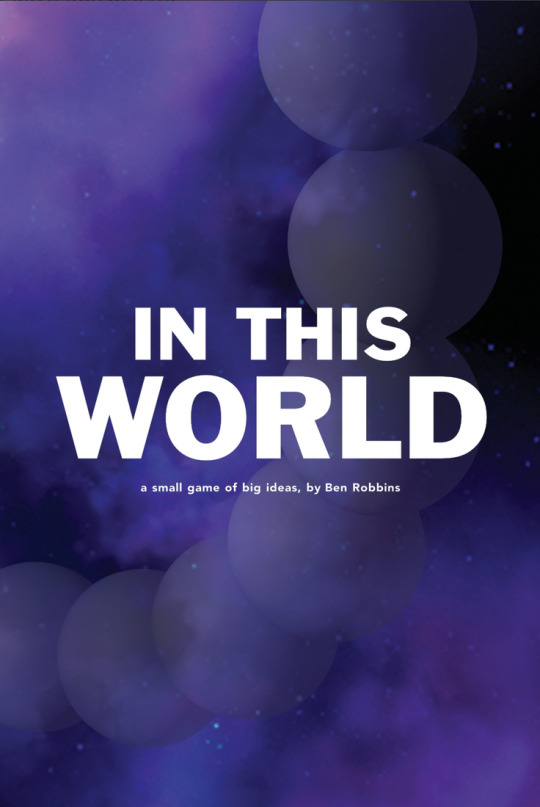
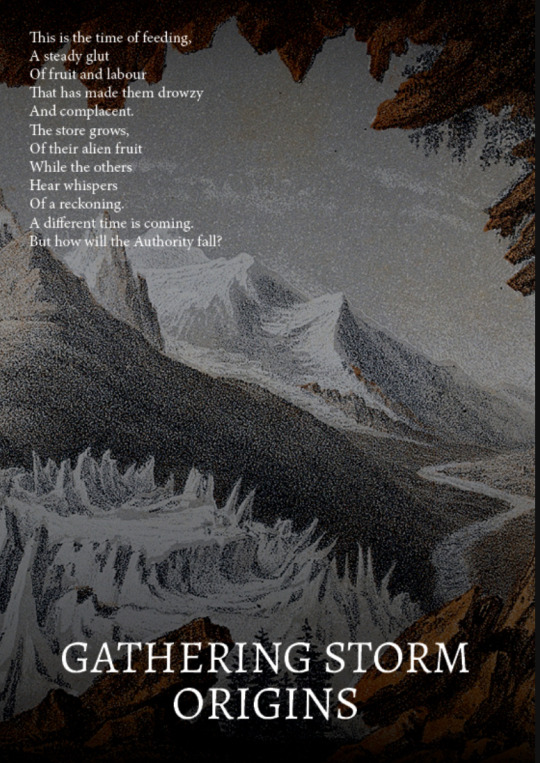
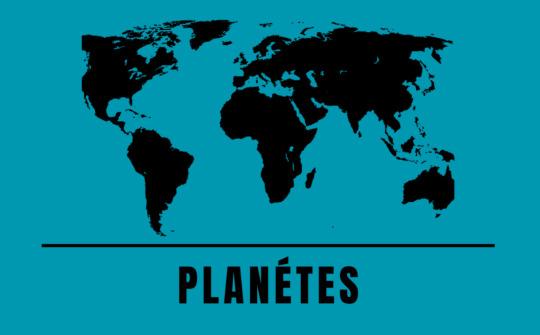
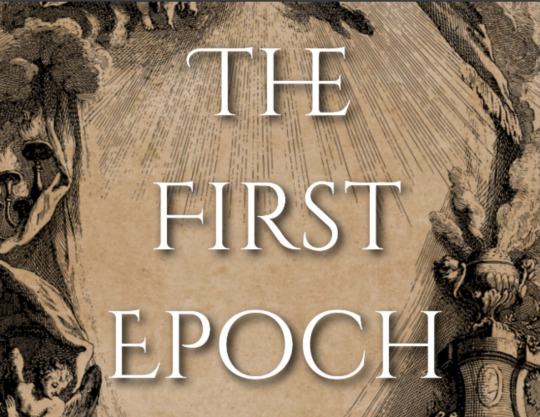

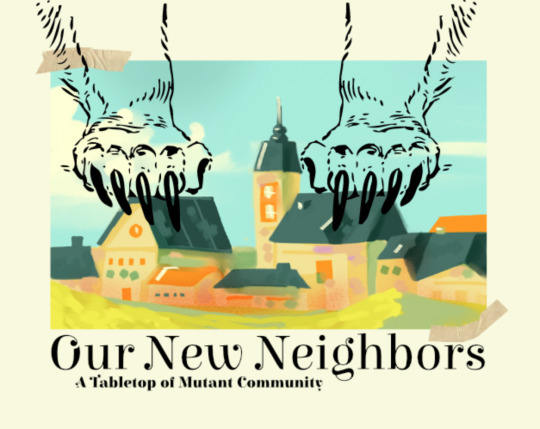
Data, Nerves + Acquisition, by Ben Newbon
Based on the Beak, Feather & Bone SRD, this game gives you a way to build out your world and develop communities within it organically, all the while creating your own stories and lore to fill in the gaps.
Built on another critically-acclaimed city builder, DNA uses a deck of cards to generate a city and the factions that live within it. Players will generate Data, which corresponds to a person or faction; Nerves, which corresponds to the faction the characters interact with; and Acquisition, which represents what each new faction’s goals are. At the end of the game you should have a city that is criss-crossed with territory, relationships, and threats that give the city a unique feel.
Data, Nerves + Acquisition is designed to create a cyberpunk or futuristic city, although the creator states that the setting is still rather flexible.
In This World, by Ben Robbins
Nations have borders. Police have badges. Dragons breathe fire. You work for money. That's the world we've come to expect. But in this world—the world we create together—we can question those assumptions and imagine alternatives. And instead of just making one world, we'll make a whole string, each exploring a different slice of what could be… all in a few hours.
In This World is a fast game of big creativity, by Ben Robbins, the creator of Microscope and Kingdom. It is designed from the ground up so that anyone can play it, even someone who has never played any kind of story game before, and have no problem just jumping right in.
It overcomes the usual challenge of inventing ideas out of the blue by starting with a framework of real world facts, things we already know, and then inviting players to stand those ideas on their head and imagine how the world could be different.
In This World is designed for making more than one world at once, using a series of speculative questions - a number of what-if’s. What if vacations were much more common? What if everyone in this world travelled by train? What if this world had libraries for more than just books?
In This World is also designed to be no-prep and GM-less, which gives everyone equal control over the creativity of the world, and doesn’t require a lot of work or set-up beforehand.
Gathering Storm: Origins, by David Blandy
This is the time of feeding, A steady glut, Of fruit and labour That has made them drowsy and complacent. The store grows, Of their alien fruit While the others, Hear whispers Of a reckoning. A different time is coming. But how will the Authority fall?
By placing your characters on a faraway planet, Gathering Storm: Origins hopes to tell a story that has parallels to a real series of events that happened in Geneva, Switzerland in ours. It uses a deck of cards and an oracle to create characters as well as events that these characters will have to navigate to determine how the people of your planet will react to the actions of an Authority that demands the production of their Alien fruit, even though that production is to the planet’s detriment. If you want a futuristic metaphor for political actions that have had a very real effect on our world, you might want to check out Gathering Storm.
Planetes, by Cambilla Zamboni
Welcome to Planétes, a language-learning tabletop role-playing game in which you will create cities and communities, and you will become Dwellers and Wanderers. While shaping and exploring your communities, you will discuss and compare your values, and decide whether to stay in your city or explore new ones. Throughout this process, you will use the target language to interact with other communities, enriching your perspective and reflecting on your experience without relying on familiar structures.
This is not just a roleplaying game - it’s also a language learning exercise meant to be used in a room of language learners, and it’s designed to work with very large groups. Multiple tables create their cities and their characters, and then each city sends one Wanderer to another city to visit and learn about the culture. Wanderers will ask the new cities questions, and the city members will do their best to answer. The Wanderers return to their home cities with the new information, coloured by their character’s worldview and values. At the end of the game, each character will have to decide to either stay in their city of origin, or move to another city - and the migration that happens will change core elements of the city.
Planétes exists on a single brochure, making it easy to print and hand out to a large group of people. If you want a game that works for large groups and can double as a learning exercise, I recommend this game.
The First Epoch, by Tib Winterfield.
Work with your players to build out the pantheons of your world, give them the gift of creation and allow them to put their own mark on the world.
Completely system agnostic, a light-weight and simple game to help you build a co-operatively build your campaign world.
The First Epoch is a world-creation game from the perspective of the gods, creating a mythology alongside a series of truths that will exist in the world that you create. Each player embodies a god and chooses specific domains. Every turn, one player will establish truths about how their domains work, and then roll Fate dice (dice with + and - on them instead of numbers) to determine the impact these truths have on the world. At the end of the game, there is a twist that will challenge all of the gods, and leave you with an end-state that you cannot predict.
If you really like mythology and want to re-write physics, magic, or how death works in your game, this is probably the game for you.
City Upon A Hill, by Hunter J Allen
City Upon A Hill is a table top collaborative city building game for any number of players. It requires a full deck of playing cards and note taking tools.
This is a game about building up a city and watching it fall. Work with your friends to populate a city full of life, commerce, legends, traditions, and secrets, and then bring the city to its knees through death, conflict, deficit, and crumbling infrastructure. Bring the city to a peak during its Boom era, and guide the city down to ruin in its Bust era, creating a setting rich in history and tragedy. Draw cards to decide the city's fate, working together to weave a tapestry that tells the story of your City Upon A Hill.
City Upon A Hill is divided into two phases: Boom & Bust. Boom follows events and details that define the city’s success, and reflects a heyday of some kind. Bust marks the decline of the city, through a series of unfortunate events and changes that affect the citizens’ well being. The game is played using a deck of cards, with the first Joker draw sparking the transition to the Bust, and the second Joker draw ending the game. I think this game is a really interesting way to create the history of a once-great city, baking in information about industry, tourism, infrastructure, and economic changes that affect the city and likely also the world around it. If you want a game that has somewhat of a melancholy ending, I recommend City Upon A Hill.
Our New Neighbours, by Whimsy Machine
In this small village, at least a few hours’ drive from any city of note, a small community has grown a bizarre polyp. As spring turns to summer, the roiling heat hatches the eggs of a startling development. New neighbours scuttle and squirm and gallop from the bushes and dirt and into unlocked sheds, messy mudrooms, and stinky attics of the village. Mutants are here, they’re weird, and they’re not sure what to bring to the potluck.
This is a collaborative storytelling, community-building, and map-making game, telling the unraveling tale of a village beset by oddities. The players take on non-specific roles, occasionally dipping into the voice of individuals, to weave something larger together.
Our New Neighours uses both a deck of cards and polyhedral dice to flesh out your map. The dice are first rolled onto a piece of paper to determine where on the map specific locations can be found, and the numbers rolled will determine how various places feel about the new arrival of Mutants. The cards are used to both generate mutations for your characters, as well as their needs. Once you have these defined, the cards will be used to generate events that may help or hinder the mutants - and prompt you as the players to respond.
Other Recommendation Posts To Check Out…
Two-Player Worldbuilders
World-Building & Roleplaying
Town-Builders
Map-Making Games
98 notes
·
View notes
Text
Map of Cyrodill from the Elder Scrolls IV: Oblivion

#oblivion#maps#imaginary maps#mapmaking#cartography#digital illustration#the elder scrolls#tes fanart#elder scrolls
314 notes
·
View notes
Text







Terra: The Motherplanet. Earth 500 years in the future
46 notes
·
View notes
Text

Grass & Road Assets 2
Our all-new terrain pack is now online! Inside, our remastered fundamentals: grass, dirt, and cobblestone. What should I draw next?
→ Get them here!
#ttrpg#tabletop#dungeons and dragons#dnd#dungeons & dragons#d&d#d&d5e#pathfinder#gurps#rpg#top-down#battle map#map#cartography#encounter#geomorph#landscaping#mapmaking
97 notes
·
View notes
Text

Pantala in my digital map style. Made in Procreate
#wof#wings of fire#wings of fire fanart#blue#cricket#sundew#snowfall#luna#wof fanart#wof art#my art#my artwork#my style#maps#mapmaking#cartography#my maps#procreate#bluebird art
23 notes
·
View notes